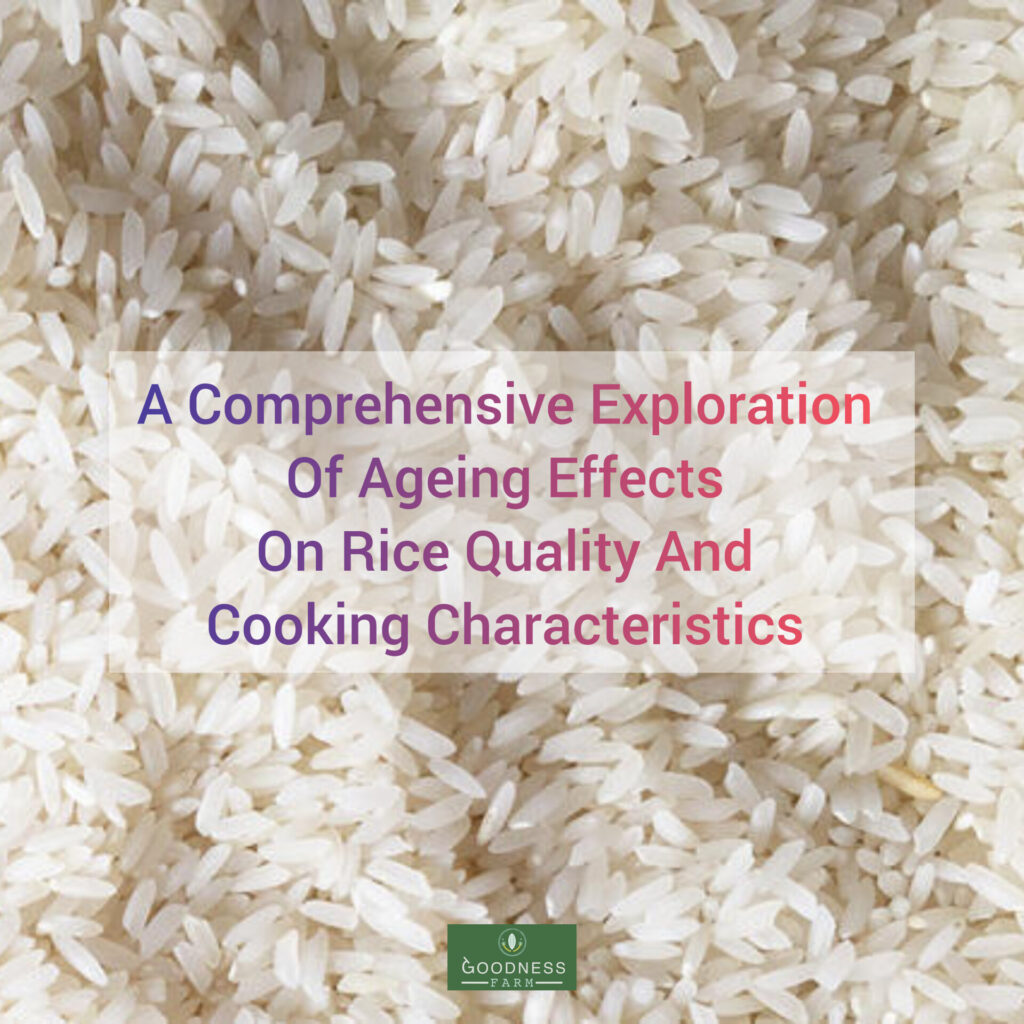Uncategorised
Ageing Rice: A Comprehensive Exploration of Culinary Excellence and Nutritional Impact

Of all the grains and their shelf life, rice alone is preferred when it is aged. This unique preference draws parallels with the world of fine wines, where aging is valued for the nuanced improvements it imparts to the final product. Just as a fine wine matures in flavor and complexity, aged rice undergoes a transformative process that elevates its culinary qualities, making it a sought-after choice. Let’s delve deeper into the fascinating world of aged rice, exploring its distinctive characteristics, culinary applications, and the scientific intricacies that set it apart.
Ageing, a pivotal method for enhancing the cooking quality of rice grains, exhibits varying efficacy depending on rice varieties and storage conditions. Natural ageing involves storing rice for three to four months post-harvest, significantly impacting cooking quality, with the general consensus that the more ageing, the better quality-wise.
Characteristics of Aged Rice
Aged rice, favored for its enhanced taste and flavor, presents distinctive characteristics:
- Higher Kernel Elongation: Aged rice shows increased elongation during cooking.
- Greater Water Absorption: Enhanced water absorption results in a flakier and denser texture.
- Volume Expansion: Aged rice exhibits significant volume expansion during the cooking process.
- Higher Head Yield: Ageing impacts both cooking and eating quality, leading to a higher head yield in aged rice.
Impact on Cooking Quality
The water absorption index, a crucial measure of cooking quality, indicates that higher absorption during boiling corresponds to better rice quality. Aged rice, with its altered characteristics, provides a unique culinary experience. “The water absorption index” refers to a measure that gauges the amount of water absorbed by rice during the cooking process. In the context of rice quality, this index is considered crucial because it reflects certain desirable attributes in cooked rice. When the statement mentions, “higher absorption during boiling corresponds to better rice quality,” it implies that rice varieties with a greater capacity to absorb water during cooking tend to exhibit improved quality after preparation. This increased water absorption often results in distinct textural and sensory qualities, making the cooked rice more desirable.
Influence on Physicochemical Properties
Ageing’s influence extends to crucial physicochemical properties, including gelatinization temperature and alkali digestion value, affecting both the cooking and eating quality of rice.
Physicochemical Changes in Aged Rice
Physicochemical changes in aged rice, known as aged rice conversion, involve alterations in fat acidity, hydroxyl and hexanal content, aroma, taste, and starch digestibility. These changes contribute to the unique characteristics of aged rice.
Texture and Viscosity Changes
Cooked aged rice tends to have a harder texture, increased fluffiness, and reduced stickiness compared to fresh rice. Viscosity parameters, such as final and setback viscosity, increase during ageing, influenced by storage time and temperature. Additionally, ageing impacts head rice yield, volume expansion, water absorption, and the overall texture of cooked rice.
Gelatinization is a process where starch in rice grains absorbs water and swells when exposed to heat during cooking. The gelatinization temperature is the temperature range at which this process occurs. Ageing can influence this temperature, affecting how the starch in rice behaves during cooking.
Mechanism of Rice Ageing
The mechanism of rice ageing involves changes in proteins, lipids, and starch, influencing properties like texture, pasting, color, flavor, and composition during storage. Aged rice generally exhibits harder, less sticky cooked grains, influenced by factors like variety, storage conditions, and amylose content.
Aged Rice vs. New Rice: A Tabulated Comparison
| Characteristics | Aged Rice | New Rice |
| Moisture Content | Less moisture, stays separated after cooking | More hydrated, tends to become sticky |
| Water Requirement | More water needed | Less water needed |
| Texture after Cooking | Harder texture, less sticky | Softer texture, more sticky |
| Considered Healthier | Yes, due to altered pasting properties | Not as much due to increased stickiness |
Thus, aged rice is the result of a complex ageing process that brings about structural and flavor changes in rice grains. Aged rice, with its distinct cooking characteristics, is often considered a healthier option compared to new rice, especially due to altered pasting properties during ageing.
Starch Changes in Aged Rice vs. New Rice: Impact on Health
Starch Alterations during Ageing
During the ageing of rice, changes in the physicochemical characteristics, including alterations in starch composition, take place. Aged rice is known to undergo modifications in the amylose and amylopectin content, potentially affecting its nutritional profile and health-related attributes.
Glycemic Index (GI) and Starch Digestibility
- Glycemic Index (GI): Aged rice, with changes in starch composition, may exhibit a different glycemic index compared to new rice. Lowering the glycemic index is generally associated with better blood sugar control, making aged rice potentially beneficial for individuals managing conditions like diabetes.
- Starch Digestibility: Studies have shown conflicting results regarding the impact of ageing on starch digestibility. Some reports suggest that ageing may not significantly affect starch digestibility, while others propose a reduction in starch digestibility, especially with high-temperature and prolonged ageing.
The changes in postprandial blood glucose levels, often associated with carbohydrate consumption, can contribute to lifestyle-related diseases such as hyperlipidemia, hypertension, and type II diabetes. Therefore, understanding the starch digestibility of aged rice becomes crucial in managing these health conditions.
Aged Rice as a Healthier Option
Despite the complex interplay of factors, aged rice is often considered a healthier option due to altered pasting properties during ageing. The changes in starch composition and digestibility, combined with other physicochemical alterations, contribute to the distinct characteristics of aged rice, making it potentially beneficial for certain health conditions.
Although aged rice is preferred for its texture and starch value, it is best suited as table rice. For certain dishes like Pongal- a south Indian delicacy, however, new rice is preferred, as it needs to be mushy upon cooking.
MJ, PhD Food Technology
